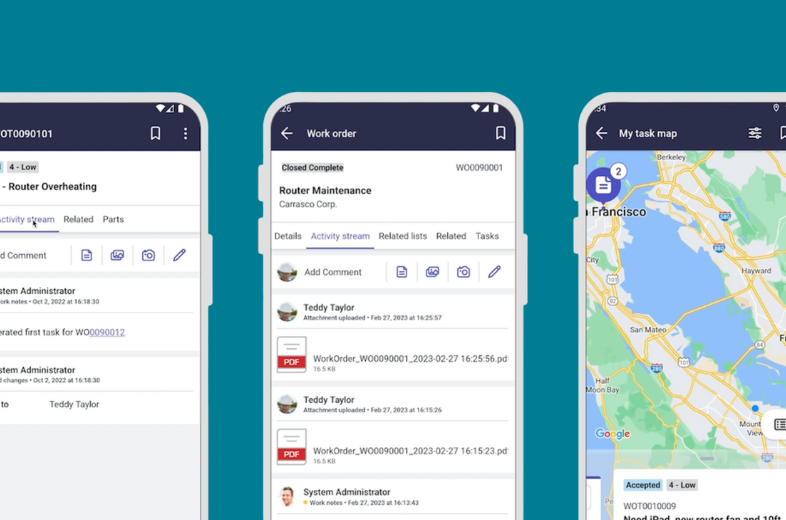What is Asset Centricity?

Published Date
With the Internet of Things (loT) in full swing, it’s estimated that more than 21 billion connected sensors and endpoints will soon exist for potentially billions of connected “things.” But what does this connectivity really mean for field service? After all just because devices are digital and linked to the internet doesn’t mean they’re always working properly. In fact, one of the biggest questions that continues to puzzle chief operating officers is how to improve operational uptime through the use of technologies like cloud and advanced analytics.
When a device is in need of servicing and a customer contacts a manufacturer for support, that interaction starts with the basics: customer name, address, etc. From there, however, the attention shifts to the device. What’s the make and model? When was it purchased? When did the problem start? These fundamental questions help providers get to the root of the issue, and either resolve it virtually or send out a technician. But what if there was no need to ask all these questions-or even send a technician.
That’s where asset centricity comes in.
Defining Asset Centricity
When assets are connected throughout the entirety of their lifecycle, manufacturers and service providers have insight not only into asset specifications, but also into key predictors of downtime. For example, sensors can collect data on how heavily or how often a device is used to better anticipate breakdowns. In today’s fast-paced world, a “sell it and forget it” approach to asset management won’t cut it-asset centricity means more proactive and efficient service, and it’s what customers now expect.
In addition to collecting data on the condition and operation of assets, asset centricity enables service organizations to proactively and preemptively schedule people, parts, and resources to improve rates like First Time Fix (FTF) and Mean Time to Repair (MTTR). This kind of predictive maintenance significantly reduces asset downtime, and creates an asset that “almost never fails,” according to Deloitte.
If field service is ultimately needed, artificial intelligence can take asset centricity to the next level, adding a layer of automation to field service processes such as technician dispatch. For example, Al-powered tools can review past work orders on a specific asset, identify any patterns in breakdowns, predict the skills that technicians will need to resolve the issue, and dispatch the repair.
And there are other advantages, too. By nature of its connectedness, asset centricity also allows service providers to access and share information easily across different interfaces such as mobile apps, and across other systems and business functions-asset data can, for example, drive not only service activities but also marketing efforts.
Getting Started
At its core, asset centricity needs connectivity and how you connect your assets will be the first decision you have to make. Are you investing in new, connected assets? Or are you looking to retrofit older devices? In any case, to start, evaluate your current network and IT infrastructure to assess coverage, signal strength, and bandwidth. You’ll need to confirm that your network can handle any increases in traffic that’ll occur once sensors start sending data.
From there, determine where your data will reside-and what you plan to do with it. To ensure that your asset infrastructure is scalable, secure and future-proof, consider a service management platform. Solutions like ServiceMax Asset 360 for Salesforce Field Service, for example, can provide complete visibility into assets in the field, arming companies with data insight to maximize asset performance.
Users can then leverage this data to inform processes such as warranty and contract management, entitlement automation, parts, returns and depot repair management, scheduling and optimization, case and work order management-and power other platforms, such as mobile field service apps or field service analytics tools.
Today, customers are more connected than ever, and so are devices. As a result, the very nature of the field service is evolving. As reliability increases thanks to asset centricity, Deloitte predicts a shift in focus from selling assets and maintenance contracts, to growing the installed asset base and generating value-add services. This massive transformation will, in time, give life to a new era of field service-one that’s based on discovering new positive experiences, not breakdowns.
To learn more about the importance of asset centricity and how it fits into your connected service strategy, download our eBook here.




.png)